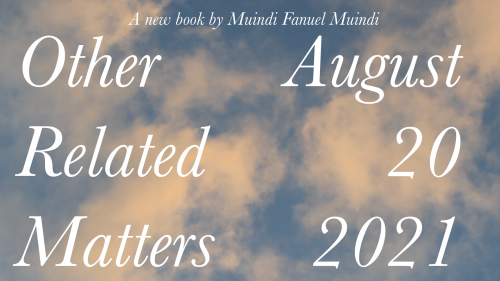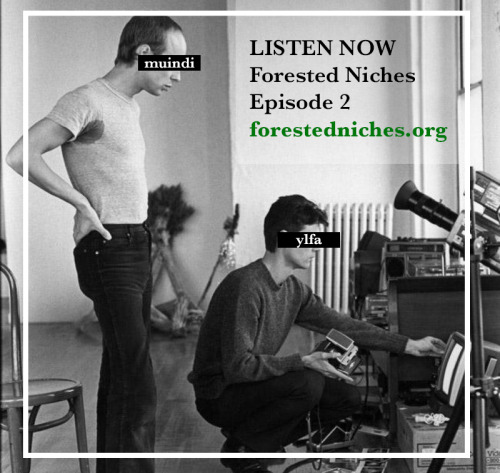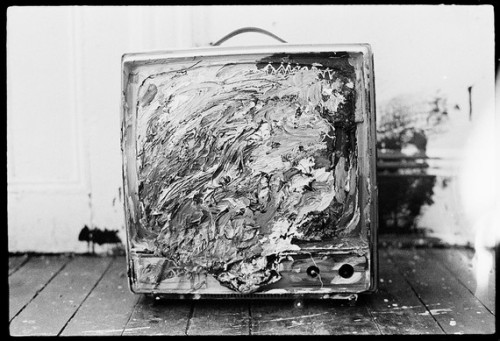Notes Towards a Concept of “Im-media”
Two Informative Anecdotes
Following up on my last post, I would like to begin to develop the term “im-media” a bit further by regarding two different “im-media” as primary informative anecdotes.
My first informative anecdote of an “im-medium” was a simple one: the “portal”. Again, what we conventionally call a “portal” (e.g., an archway or a doorway) does not mediate between two different spaces, rather, it articulates a space that immediately relates two different spaces. By contrast, a “barrier” mediates between two spaces or, in other words, a “barrier” closes off an immediate relation between two spaces. From this informative anecdote, I want you to recognize that im-media are “portals of entry, exit, and communication”, and I want you to recognize that media are “barriers to entry, exit, and communication”. Also, I want you to recognize that the difference between the two spaces that are immediately related to one another need not actually precede the construction of the portal that articulates their immediate relation. For instance, I can create two different spaces in a single open field by constructing an archway portal in the middle of such a field. In this way, the different spaces on either side of the archway only existed virtually prior to the creation of the archway: the creation of the archway is what made the different spaces actually exist.
My second informative anecdote of an “im-medium” is the “germ” (i.e., the “cutting”, the “rhizome”, the “seed”, or the “spore”) that facilitates plant propagation. I want to argue that germs articulate bio-geographies that immediately relate different bio-geographies. Let’s say that I take a seed from a plant that grows here in the temperate rainforests of the Pacific Northwest Coast of North America, on the Olympic Peninsula, and that I transport this seed to the temperate rainforests of Japan, to northern Honshu. Ay, and let’s say that I plant this seed on northern Honshu. Now, no matter whether this seed from the Olympic Peninsula takes root or fails to take root on northern Honshu, this seed articulates a biogeography that immediately relates the biogeography of northern Honshu to that of the Olympic Peninsula: if the seed takes root, this immediate relation conveys a biogeographical similarity; if the seed fails to take root, this immediate relation conveys a bio-geographical difference. Now, going further, if the seed fails to take root and I intervene in the ecology of northern Honshu, making the biogeography of northern Honshu more similar to the biogeography of the Olympic Peninsula and enabling such a seed to take root in future, this homogenizing intervention in the ecology of northern Honshu mediates between the biogeography of northern Honshu and that of the Olympic Peninsula. Alternatively, if the seed succeeds in taking root and I intervene in the ecology of northern Honshu, making the biogeography of northern Honshu less similar to the biogeography of the Olympic Peninsula and preventing such a seed from taking root in future, this diversifying intervention in the ecology of northern Honshu mediates between the biogeography of northern Honshu and that of the Olympic Peninsula.From this informative anecdote, I want you to recognize that im-mediations are disseminations of germs that convey similarities and differences amongst different grounds, and I want you to recognize that mediations are interventions that make different grounds more or less similar to one another. Again, however, I also want you to recognize that similarities and differences amongst different grounds are actual only in relation to im-mediations: the biogeographical similarities and differences conveyed by the dissemination of the seed from the Olympic Peninsula to northern Honshu were virtual until they were actualized by the dissemination of the seed from the Olympic Peninsula to northern Honshu.
Now, to return to my
Nine Theses, I hold that a power
mediates relations by erecting
barriers between factions and staging
interventions amongst factions: erecting barriers and staging interventions are practices that enable “authorities” who would spectacularize, routinize, and normalize differences so as to make different factions either more or less similar to one another. Furthermore, I hold that a counterpower
im-mediates relations by opening
portals between factions and disseminating
germs amongst factions: opening portals and disseminating germs are practices that enable “dissenters” who commute from faction to faction so as to convey similarities and differences amongst different factions.
Posted at 1:42pm and tagged with: portals, propagators, DISSEMINATION, philosophy, race, racism, power, Jean-Michel Basquiat, painted television, Alexis Adler, im-media, nine theses,.


















1 note